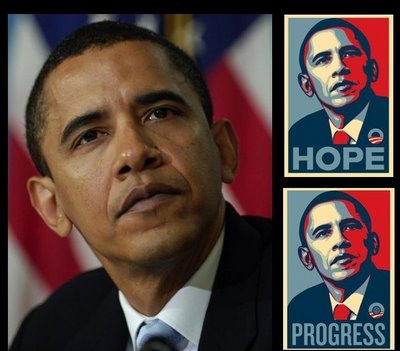
Image credit: Screen shot of APimages.com
A recent development in Shepard Fairey's ongoing legal battle with the Associated Press sent me thinking through some of the issues surrounding large private, not-for-profit, and commercial archives of stock photography and photojournalism. Last year, the AP claimed that Fairey violated copyright laws when he based his "Hope" poster for the Obama campaign on one of their photographs. Fairey countered that he was protected under fair use, but his situation suffered a setback last week when he admitted to knowingly submitting as evidence images that were different than those under consideration in the trial. While this case raises several interesting questions about the doctrine of fair use and visual allusion, I am also curious about the extent of influence the Associated Press has on our daily interactions with visual images. How does this massive news agency--with over 10 million images in its library--shape our access to and understanding of contemporary photojournalism?

Image credit: Shepard Fairey, Manny Garcia,
The Associated Press, and Myartspace.com
The Associated Press is a news cooperative comprised of several radio, television, and print sources that both contribute to and make use of material generated by staff journalists and affiliated journalists. The agency was originally founded during the Mexican American war by several New York newspapers but has since expanded in scope and size. According to their website, the Associated Press has 243 bureaus in 97 countries, distributes material to 1,700 newspapers, and has won 49 Pulitzer Prizes including 30 for photography. The agency generates over 1,000 images a day and the library houses negatives dating back over 100 years. Clearly this institution has had a long history of defining and developing our notion of photojournalism.
I had quite a bit of fun simply playing around with their search engine, typing in various combinations of terms--for instance, "war" and "women"--to gain a sense of how the AP organizes and indexes its images. The AP images archive allows "image buyers" to purchase prints for personal use or the rights to photographs for circulation. Images are organized into categories we might expect--"domestic news" and "sports"--and others that I found more surprising--"polar bears" and "faces of Obama." Without spending hours and hours culling through these collections (a prospect, I have to admit, that seems daunting and tempting), I can still begin to sense the sheer enormity of this archive and the extent to which I am at the mercy of the archivists, meaning-makers in the surfeit of visual information. Although in "The Body and the Archive" Alan Sekula wrote about the time period between 1880 and 1910, spending just a few minutes searching through the AP's digital collections today makes clear his argument that the creating of archives makes a claim on a particular vision of history with some images privileged and others others omitted or relegated to less visible spaces.
Recent comments
2 years 29 weeks ago
2 years 44 weeks ago
2 years 44 weeks ago
2 years 50 weeks ago
3 years 4 weeks ago
3 years 4 weeks ago
3 years 4 weeks ago
3 years 6 weeks ago
3 years 6 weeks ago
3 years 6 weeks ago